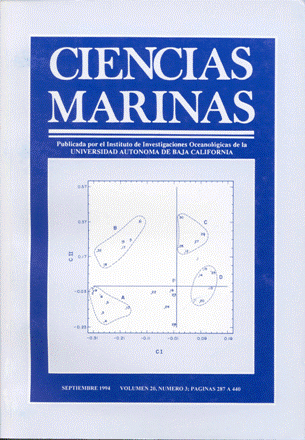Quantity and quality of the particulate organic matter in Concepcion Bay, during the spawning season of the scallop Argopecten circularis (Sowerby, 1835)
Main Article Content
Abstract
In this study we describe the spatial variability of the particulate organic matter (POM), expressed in terms of proteins, carbohydrates and chlorophylls, and the specific abundance of phytoplankton at Concepción Bay during the maximum reproductive peak of Argopecten circularis. The distribution of these variables shows two zones of high concentration of particles: one located in the first “third” of the bay and the other in the upper end. High values of chlorophyll a were due to the nannophytoplankton size class, which is the major contributor to the total phytoplankton abundance. The most abundant species of microphytoplankton were Chaetoceros curvisetus, C. lorenzianus C. teres, C. cinctus and Lithodesmiun undulatum. The phytoplanktonic-POM and non-phytoplanktonic-POM contribution estimated at the surface shows that the highest protein percentage (69.5%) was due to phytoplankton, whereas at 10 m depth it corresponded to non-phytoplankton-POM or detritus. This indicates that a high quality POM in the water column represents a potential source of food for the different development stages of A. circularis.
Downloads
Article Details
This is an open access article distributed under a Creative Commons Attribution 4.0 License, which allows you to share and adapt the work, as long as you give appropriate credit to the original author(s) and the source, provide a link to the Creative Commons license, and indicate if changes were made. Figures, tables and other elements in the article are included in the article’s CC BY 4.0 license, unless otherwise indicated. The journal title is protected by copyrights and not subject to this license. Full license deed can be viewed here.

